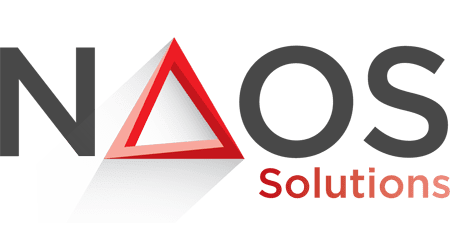The concept of Agile HR has emerged as the adept navigator in the transformative voyage through the corporate world, guiding the organizational ship through the storm of constant change and evolution. Imagine this domain as a vast, dynamic ocean, where the fluidity of Agile HR allows an organization to sail smoothly, unbound by the cumbersome anchors of rigid structures and processes.

The concept of Agile is not novel; it’s been influencing departments from IT to marketing, creating ripples of transformative changes across organizations. Yet, can the fluidity of Agile penetrate the structured walls of Human Resources (HR)? Intriguingly, the answer is: absolutely! Agile HR is not about dismantling structures. It’s about infusing adaptability and responsiveness into the robust skeletal frame of policies and processes, creating a stable and agile entity.
In this article, we will learn more about agile HR, explore its definition, examine the challenges of implementing this approach, and explain why outsourcing may be the key to gaining agility. Finally, we will showcase case studies and success stories, demonstrating how organizations have successfully transformed their HR function and achieved significant results using Agile HR methodologies.
So keep reading!
Cultivating HR Agility: A Key Driver of Organizational Success
What is Agile HR?
Agile HR refers to applying agile methodologies in the Human Resources (HR) function, emphasizing adaptability, swift response to change, and continuous development.
Originating from software development, agile practices in the HR context mean designing and implementing HR processes and techniques that can quickly adapt to the changing needs and demands of the business and its employees.
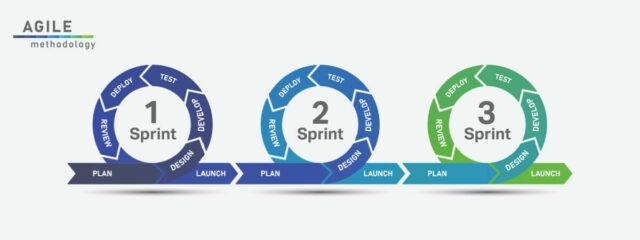
Agile HR includes practices such as iterative work cycles, regular reflections on processes, and a strong emphasis on values and principles that foster adaptability, such as customer-centricity (in this context, employees are considered internal customers), collaboration, and simplicity.
The Crucial Role of Agility for Modern HR Departments
In today’s fluid and rapidly evolving business environments, agility in HR becomes paramount to effectively navigating the intricacies of talent management, organizational development, and employee engagement. The dynamism embedded in Agile HR aids in the following:
- Anticipating and Adapting to Change: Ensuring the HR function remains relevant and effective in the face of organizational and external shifts.
- Enhancing Employee Experience: By applying agile methodologies, HR can create more adaptive and employee-centered programs and initiatives that enhance employee experience, boosting engagement and retention.
- Strategic Alignment: Agile HR aligns human resources processes and activities more tightly with the organization’s strategic goals, ensuring that talent management is always in sync with organizational objectives and can pivot in response to strategic shifts.
- Innovation and Continuous Improvement: Agile HR departments embrace a mindset of perpetual enhancement and continuously innovate and refine their processes, policies, and initiatives to meet the evolving demands of the workforce and the external market.
In essence, Agile HR is not merely a set of practices but embodies a philosophical shift, ushering HR functions into a more dynamic, responsive, and employee-centric era. This approach ensures that HR keeps pace with organizational evolution and actively contributes by being a proactive, adaptive entity that empowers employees and aligns talent strategies with corporate goals seamlessly and efficiently.
Achieving HR Agility
Identifying Barriers from the Traditional HR Models that Limit Agility
Embarking on a journey towards Agile HR, it’s pivotal to recognize and understand the traditional models and the inherent challenges in the transformation process:
- Rigidity: Conventional HR models often hinge on fixed structures and processes that lack the flexibility to adapt promptly to changing circumstances.
- Silos: Traditional models may operate in departmental silos, hindering cross-functional collaboration, a cornerstone of agile methodologies.
- Lengthy Processes: Traditional approaches often involve long approval and implementation processes that are antithetical to agile methodologies’ swift and adaptive nature.
Traditionally, HR departments mainly focused on processes related to recruitment, employee management, performance evaluation, and training. This approach was mostly limited to the Hire to Exit HR processes.
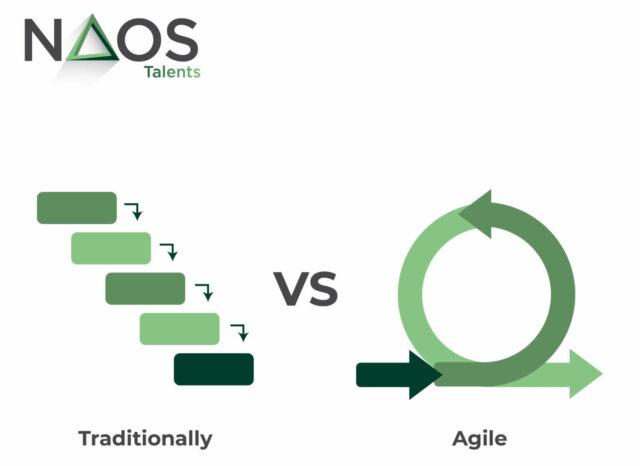
However, with the emergence of Agile HR, organizations now invest in building a strong employer brand and establishing long-term relationships with employees and potential candidates through various channels, such as social media.
Embarking on a journey towards Agile HR is neither a swift nor straightforward transition. Achieving agility within HR departments isn’t an overnight metamorphosis but a gradual process that unfolds through iterative adjustments, learning, and alignment with agile practices. Throughout this process, the department may navigate through ebbs and flows, learning and re-adjusting to build an agile ecosystem progressively. Moving project by project, the tangible benefits of agility begin to surface, providing a framework that amplifies adaptability and fosters a dynamic approach to HR operations.
Establishing a Groundwork for Agile Transition
Agile transformation encompasses shifts in practices, mindsets, and cultural adaptations. Moving from traditional to agile HR is an investment in creating a more responsive, adaptive, and impact-driven department capable of navigating complex and fast-paced business landscapes. With each iterative cycle, the team becomes progressively agile. It enhances its capacity to deliver strategic and impactful HR initiatives, fortifying the organization’s human capital management in an ever-evolving business context.
- Iterative Evolution: Acknowledge that agility is achieved through continual, incremental changes and is a journey of steady evolution rather than a drastic transformation.
- Training and Vocabulary: Before diving deep into agile practices, thorough training for the HR team is imperative to acquaint them with agile methodologies, terminologies, and mindsets. This foundational knowledge enables smoother adaptation and implementation of practices.
- Leveraging Agile Coaches: Enlisting the assistance of an agile coach, especially in the initial phases, can help the team effectively navigate the new processes and methodologies. An agile coach provides insights, guidance, and support, steering the team through the nuances of agile practices and aiding them in circumventing common pitfalls.

Practical Steps to Implement Agile Methodologies into HR Departments
Define and Design (Sprint Planning)
- Identify HR Priorities: Determine the key HR initiatives that require agility, such as talent acquisition, learning and development, or performance management.
- Assemble Cross-Functional Teams: Agile teams typically thrive when small and cross-functional. A widely recognized framework suggests a team size of 7 +/- 2 members to maintain effective communication and collaboration while ensuring diverse skill sets. The team should encapsulate a range of competencies and expertise to address various aspects of the project. This interdisciplinary approach fosters innovation and holistic problem-solving.
- Establish a Backlog: Create a prioritized list of tasks, projects, or improvements, known as backlogs, to guide the activities during the sprint.
Iterative Work Cycles (Sprints)
- Time-Boxed Periods: Conduct sprints over specified durations (e.g., two weeks) where the team works on the highest-priority items from the backlog.
- Daily Stand-Ups: Facilitate short, daily meetings for team members to update their progress and highlight any roadblocks.
- Utilize Agile Tools: Employ Kanban boards or digital platforms to visualize task progress and manage workflows transparently.

Review and Retrospective
- Sprint Review: At the end of each sprint, review the outcomes against the set objectives, discussing successes and areas for improvement.
- Retrospective Meeting: Conduct a session to reflect on the sprint process, identify what worked well, and pinpoint areas for process enhancement in subsequent sprints.
- Adjust the Backlog: Based on the insights gathered, reprioritize or modify the backlog for the next sprint, ensuring it aligns with current objectives and learnings. Refine processes and address identified areas of improvement.

Adapt and Implement (Continuous Improvement)
- Scale and Modify: Gradually expand agile practices to other HR initiatives and processes, adjusting methodologies per each function’s unique needs.
- Culture of Continual Learning: Fostering a culture that encourages constant learning and adaptation is vital. Ensure learnings and adjustments are documented and shared across the department to perpetuate continuous improvement.
Transitioning with Mindset and Methodology
Transitioning towards Agile HR necessitates a blend of mindset shift and methodological adaptation. Enabling teams to function within an agile framework involves fostering a culture of openness, collaboration, and continuous improvement. This journey involves iterative cycles and a persistent focus on progress, ultimately leading to greater adaptability and impactful delivery in HR.
Unlocking Organizational Agility: Leveraging Agile HR Outsourcing Strategy for Success and Overcoming Challenges
Let’s explore how outsourcing certain HR functions can significantly bolster the department’s agile capabilities, discussing what to outsource, its strategic advantages, and the framework for choosing the right outsourcing partner.
Outsourcing can focus the internal HR teams on strategic initiatives while ensuring external experts handle routine administrative tasks efficiently.
Gaining a Competitive Edge: The Advantages of Outsourcing for Business Agility
The adoption of outsourcing Agile HR brings numerous benefits to organizations, helping them stay competitive and navigate the rapidly changing business landscape.
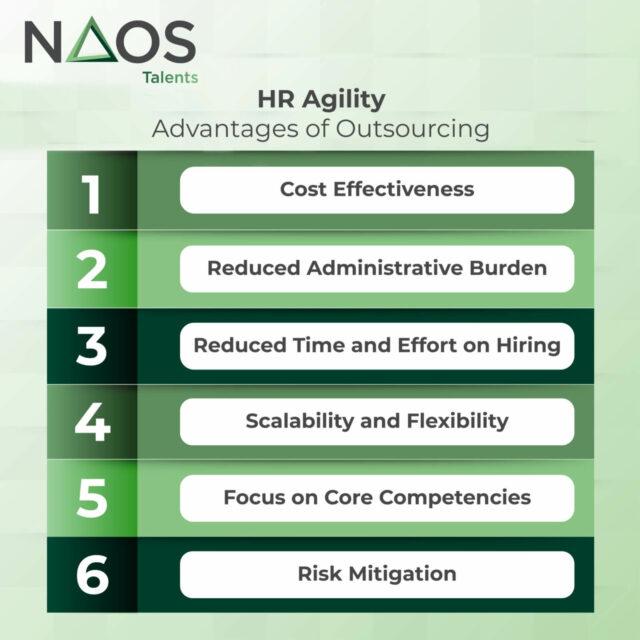
Outsourcing can offer several key benefits that enhance agility within an organization and lead to more improvements in several key areas:
1- Cost Effectiveness
Reduce overhead costs associated with hiring and maintaining in-house staff, including salaries, benefits, office space, and training expenses. The HR department can redirect the cost savings toward strategic initiatives.
2- Reduced Administrative Burden
Outsourcing administrative HR functions like payroll and benefits administration can free up HR professionals to focus on more strategic HR initiatives and employee engagement.
3- Reduced Time and Effort on Hiring
Simplify and facilitate the hiring processes and onboarding for specific roles, allowing organizations to rapidly adapt to changing workforce needs.
4- Scalability and Flexibility
Scale up or down outsourcing arrangements quickly to accommodate fluctuations in workload or business demands. This flexibility is precious in rapidly changing environments.
5- Focus on Core Competencies
Outsourcing non-core functions allows organizations to concentrate their resources and efforts on core business activities and strategic objectives, promoting efficiency and competitiveness. With routine tasks outsourced, internal teams have more time and mental bandwidth to focus on innovation, creativity, and strategic thinking, driving business growth.
6- Risk Mitigation
Helping transfer certain risks, such as compliance and legal responsibilities, to specialized providers better equipped to manage them effectively.
Commonly outsourced HR functions
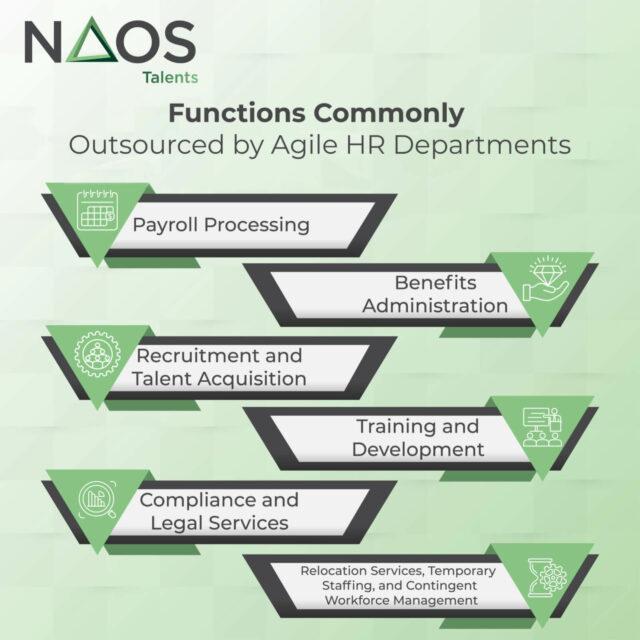
1- Payroll Processing:
Ensure accurate and timely payment of employees, tax compliance, and the efficient handling of deductions and benefits.
2- Benefits Administration:
Managing employee benefits, such as health insurance, retirement plans, and leave policies.
3- Recruitment and Talent Acquisition:
Recruitment process, including job posting, candidate screening, and initial interviews.
4- Training and Development:
Provide access to specialized trainers and resources to enhance employee skills and performance.
5- Compliance and Legal Services:
Help organizations stay up-to-date with changing employment laws and regulations, reducing legal risks.
6- Relocation Services, Temporary Staffing, and Contingent Workforce Management:
A company can outsource temporary workers to staffing agencies or managed services providers. Outsourcing relocation services can simplify moving employees for companies with a mobile workforce or international operations.
Define an Agile HR Outsourcing Strategy
An agile HR outsourcing strategy involves employing external HR services and solutions that are adaptable and capable of swiftly responding to the varying needs and changes within a business.
Agile HR seeks to optimize the HR function’s responsiveness and adaptiveness, ensuring that the human resources initiatives are aligned with the company’s strategic goals while also being able to pivot as those goals evolve. Here’s a guideline on how companies might define their agile HR outsourcing strategy:
- Define Core Values and Objectives
Determine the key goals and values that the outsourcing strategy should support.
Identify how to integrate agility into these objectives.
- Assess Internal Capabilities
Analyze internal HR functions and recognize areas that may benefit from outsourcing.
Identify the skills and capabilities that need to be developed internally vs. the outsourced ones.
- Identify Outsourcing Needs
Recognize the areas within HR that require agility.
Evaluate the aspects where external expertise can bring about improved efficiency and innovation.
- Select an Agile HR Partner
Look for partners who offer the required services and align with the company’s values and objectives. Ensure they have proven expertise in delivering agile and adaptable HR solutions. We describe later in this article how to select the ideal Agile HR Outsourcing Partner.
- Evaluate and Improve continuously.
Implement mechanisms for the ongoing assessment of the outsourcing strategy’s effectiveness. Be ready to adjust the strategy based on evolving organizational needs and market changes.
Adopting an agile HR outsourcing strategy should inherently involve the principles of flexibility, iterative development, and cross-functional collaboration, ensuring that the HR functions are efficient, resilient, and adaptable to the dynamic business environment.

Navigating the Path to Outsourcing Success: Selecting the Ideal Agile HR Partner
Choosing the right partner for outsourcing Agile HR requires careful consideration, due diligence, and a focus on finding a provider that meets your immediate needs and aligns with your long-term strategic goals. Collaboration and effective communication are crucial to building a successful and mutually beneficial relationship with your chosen partner.
- Define Requirements Clearly: Establish a clear understanding of the functionalities and support needed from an outsourcing partner.
- Align Cultural and Ethical Values: Opt for a partner whose organizational culture and ethical standpoints mirror your own.
- Assess Expertise and Capabilities: Evaluate the potential partner’s proficiency, experience, and capability to meet your HR needs.
- Examine Financial Stability: Ensure the prospective partner demonstrates financial stability and reliability.
- Evaluate Technological Competency: Consider their technological capabilities, ensuring they align with your HR tech requirements.
- Verify Compliance and Risk Management: Confirm their aptitude for managing compliance effectively and safeguarding against potential risks.
- Negotiate Terms Clearly: Ensure all service parameters, financial aspects, and expectations are explicitly discussed and agreed upon.
- Continuous Evaluation: Adopt a framework for regularly assessing the performance and impact of the outsourcing partner, ensuring consistent value delivery.
Success Stories of Agile Outsourcing: A Glimpse into the Mane Egypt and NAOS Talent Collaboration
MANE, a global entity specializing in creating flavors and fragrances, has established a widespread business network with offices operating cohesively across numerous countries. The company’s diversified portfolio encapsulates ingredients contributing to an array of industries, including but not limited to beverages, confectionery, and personal care products.
A structured conversation with Mrs. Nancy Boyajian, Operation Manager at MANE Egypt, affords insights into the tangible impact of engaging NAOS Talent as a Human Resource provider. The HR team at NAOS Talent extended comprehensive support, materializing in a well-equipped office facility that melded comfort and efficiency.
Mrs. Boyajian additionally underscores the positive implications stemming from methodical payroll management and transactions, alongside an exemplary service provided by NAOS Talent concerning medical insurance facilitation.
This reflection culminates into a representation of how agile HR outsourcing, when seamlessly integrated, can foster an environment conducive to maintaining an effective, uninterrupted operational workflow within an organization.
Conclusion
Outsourcing Agile HR functions empowers companies to overcome HR-related challenges and confidently seize opportunities. It streamlines operations, mitigates cultural differences, enhances compliance with labor laws & regulatory requirements, reduces costs, and fosters a more agile and competitive organization. As local and global markets continue to evolve, the positive impact of this strategic shift to HR Agility becomes increasingly evident in achieving long-term success.
A strategic partnership with NAOS Talent as an Agile HR provider allows your company to refocus its internal resources on core strategic initiatives. By offloading HR functions to experts, leaders can allocate more time and attention to driving innovation, expanding market reach, and achieving growth goals.
